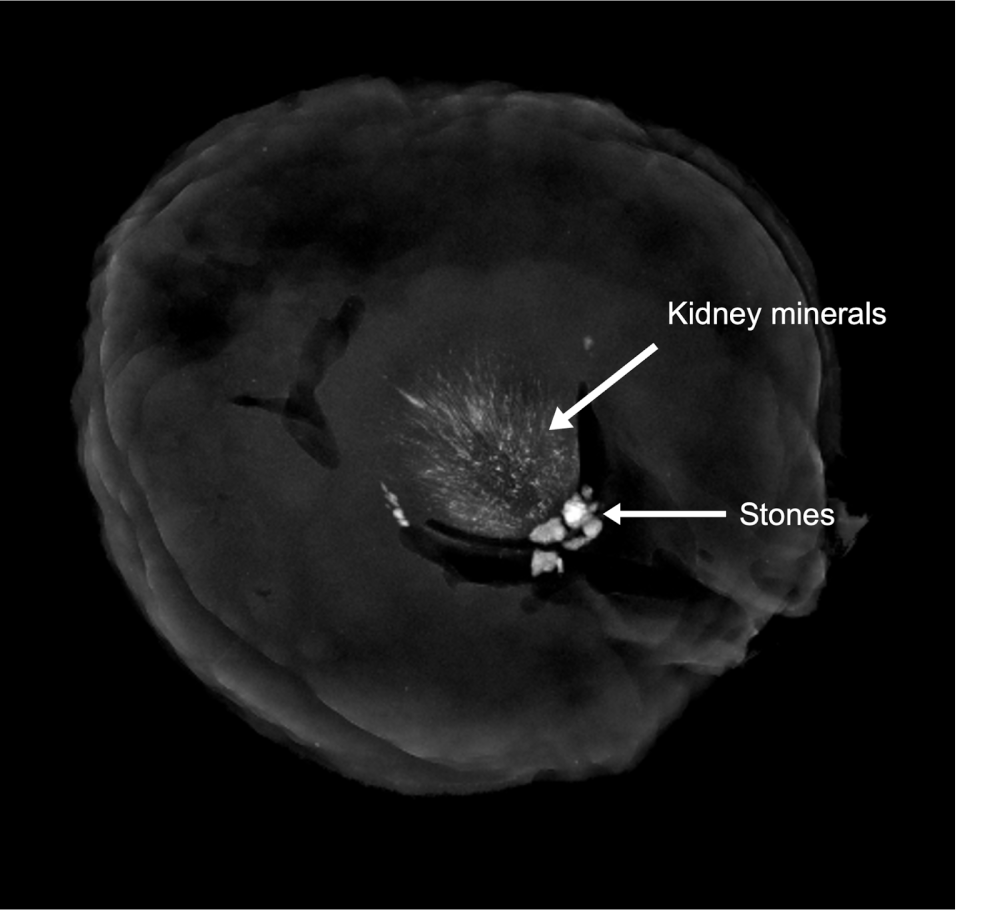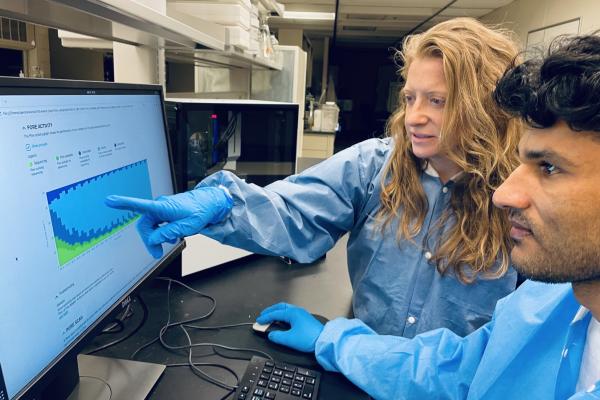CVM researchers receive grant to study why kidney stones form in cats
February 19, 2024

Stones in a kidney with visible mineralization
College of Veterinary Medicine researchers led by Dr. Jody Lulich received start-up funds from the EveryCat Health Foundation to study the formation of kidney and ureteral stones in cats. Ureters are the tubes carrying urine from the kidneys into the bladder. When stones obstruct the ureter, they cause severe kidney damage and thus pose a significant health threat. Current treatment options for ureteral stones come with notable risks and high mortality rates, and better options for treatment and stone prevention are desperately needed.
Lulich and study co-investigator Dr. Eva Furrow are co-directors of the Minnesota Urolith Center—the largest urinary stone analysis center in the world for animals, with a database of almost 2 million veterinary samples—so they know well what a common and distressing problem stones are. Most of the ureteral stones they see are composed of calcium oxalate (CaOx) and originate in the kidney. However, what causes these stones to form in cats remains unclear. This body of research is the first to examine the relationship of stone formation to mineralization in cat’s kidneys.
The researchers have previously observed that CaOx stones form over these kidney minerals. “You wouldn’t have a snowflake if there wasn’t a particle of dust in the center of it,” describes Lulich. Similarly, “minerals in the urinary space would not form a stone if there was not a structure to form around.”
If kidney mineralization is a major avenue to stone formation, then understanding why mineralization happens is key to learning how to prevent stone formation. Targeting mineralization at an early stage could help prevent stones and preserve kidney function. Furthermore, kidney mineralization is common in cats with chronic kidney disease. So understanding what leads to kidney mineralization might also result in new opportunities to reduce and prevent the damage that contributes to chronic kidney disease.
For this study, the researchers will use samples from a bank of hundreds of kidneys that owners have generously donated after their cats’ passing. With RNA from these samples, they will perform a type of genetic analysis called a gene differential expression analysis, which “allows us to compare the genes in cases where kidney mineralization has occurred with control samples where it has not,” describes PhD student Dr. Nuttha Hengtrakul, who is also involved in the research. By casting a large net, they can identify specific genes and gene activity that are common among the cases, but not the controls—in other words, genetic markers that demonstrate a predisposition for mineral formation.
Hengtrakul won an internal CVM grant in 2023 that enabled the research team to kick off some of the initial work that they will pursue with the EveryCat grant.
“Once we understand what’s going on genetically, then we can start developing processes to block or minimize it,” says Lulich. Depending on what they discover, preventative approaches could include dietary interventions, medications that inhibit (or block) the genes that are linked to mineralization, or a combination of strategies. “Because many factors come together to cause the situation,” Lulich notes, “there may be many pathways to try to prevent it.”


